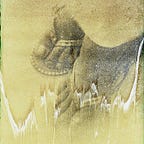Thanks for the thoughtful reflections. Writing in the preferred style of Medium, a personal story, just helped to confirm to me that my photo essay reflects as much or more about me, the photographer, as the ostensible subjects of the photographs. I think that’s always true of personal projects and also of many reportage projects. There are reasons photographers choose the projects that they do.
Ultimately, I think failing to clarify why he needed to become a client to reveal a different side of the women who make their living from sex was the major hole in the conceptual development of this work.
I think there is a value to the fact I was a client beyond any pleasure I derived or money the women earned, and that is capturing in photos the women’s work personas. That I was a former and potential client meant that those personas were active and working in my presence, and that’s something I wanted to show. The whole concept of the series developed from a recognition that sex workers perform, both in the come-on or sales pitch and in the execution of the deal. And as I wrote, I wanted to juxtapose that to their non-preformance time, their real-life personas. I think the other examples cited where the photographer did not have sex with the sex workers lack the engagement or intimacy (however feigned) that my series has. Again, this gets back to my point that this is very much about the perspective of the client, the perspective of a man. While many women participate in slut-shaming and perpetuating the madonna-whore dichotomy, it’s men’s fear of and compulsion to control women’s sexuality that is behind it. It’s men who are the primary intended audience of the series.
Schafer’s subjects are predominantly isolated in the frame (which ties straight into the social isolation we presume for prostitutes), and he over relies on the tropes of photographing sex workers (nudity, silhouettes, isolated body parts). Neither of which support his desire to make images that transcend “the false dichotomy that defines a woman as either madonna or whore.”
They are isolated in the frame, as they are isolated in real life. They are alone with only the male gaze of the client or they are alone off-hours, maybe with a single best friend in their apartment or out and about. They are internal migrants, working away from home and family for months at a time. They are often homesick and miss their children. Brothels present some valuable camaraderie and social support, for sure, but the episodic migrant experience is defining for Dominican sex workers.
The success of my desire to present images that transcend the false dichotomy that characterizes a woman as either madonna or whore rests on the series as a whole and not on characteristics of individual pictures, many of which are designed to evoke stereotypical images of the whore. Maybe this comes across better in the way the series is presented in order, with captions, at the LensCulture site. As for the tropes of silhouettes and isolated body parts, those photos are the results of parameters set by most of the women to not show their faces in the context of their work. This then became the style of the shots I made for half of the series, of them at work. I guess this might even be considered in a limited sense a product of collaboration with the women. (There is an exception of one woman sleeping at work — the one woman who did not object to her face being shown — but although she’s at work, she has let down her work persona to get some very real rest.)
I would like to do a wet plate series of portraits of Dominican sex workers in the future — with the women receiving the tintype to keep after I scan it. The idea of doing something more collaborative would fit well with that project and appeals to me very much. I appreciate your advocacy of collaborative projects.
